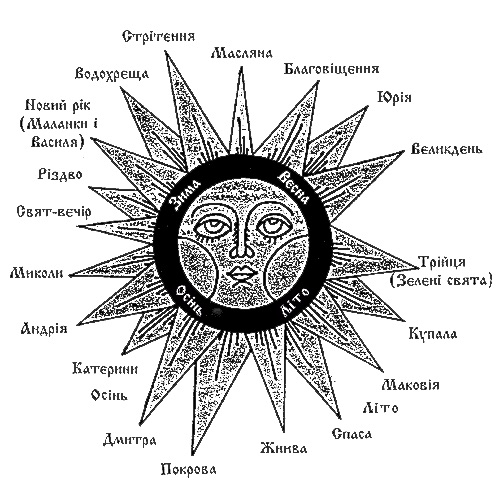Traditions:
Writing Pysanky
Traditions:
Writing Pysanky

When were pysanky written?
Pysanky were written beginning on Stritennia (Стрітення) and up to Easter itself. Stritennia, which falls on February 2nd (old calendar, and is celebrated on the 15th on the modern calendar) is the day on which it was said winter meets spring. In many areas pysanky were written predominantly during Holy Week, the last week of Lent in the Byzantine Catholic and Orthodox calendars1, although this varied a bit from region to region.
“In Podillya they believe that the best time to begin making pysanky is the second day after the Sunday of the Veneration of the Cross (which is celebrated on the third Sunday of Lent), and that on the Day of the 40 Saints one should write pysanky with ‘40 triangles’ (sorokoklyn pysanky). On Palm Sunday and on the Feast of the Annunciation (April 7), one should have nothing to do with making pysanky–they will spoil.2”
Even today, most people still write their pysanky in the weeks before Easter, either at home or in classes in schools and churches. There are many pysankary, though, that write them year-round, hobbyists as well as professionals, as the traditional craft has become divorced, for many, from its talismanic roots.
__________
1.Ukrainian christians are generally split between Eastern Orthodox and Byzantine Catholic (Uniate) denominations. Although the evangelicals and protestants have made some inroads in recent years, most religious ethnic Ukrainians belong either to one of three orthodox churches, or to the Uniate church. The Roman Catholic church has a small presence in Ukraine, but its adherents are mostly Ukrainians of other ethnicities or foreign residents.
Both the Orthodox and Uniate churches follow the old Julian calendar, which lags thirteen days behind the modern Gregorian calendar, and their holidays fall on the same days.
Uniate churches are found mostly in western Ukraine, in areas formerly under Austrian or Polish rule (but rarely in Volyn). Orthodox churches predominate in most of the rest of Ukraine, including Zakarpattya (Transcarpathia).
Back to Traditions home page
Back to MAIN Pysanka home page.
Back to Pysanka Index.
Search my site with Google
